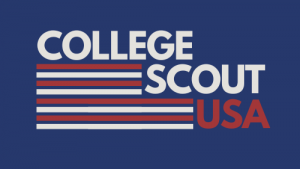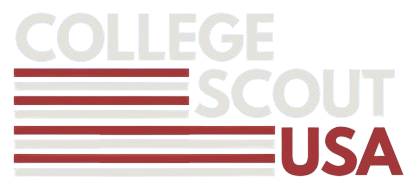US College Soccer Scholarship Costs Explained [2025 Full Guide]
A clear look at US college soccer scholarship costs, including athletic awards, academic grants, living expenses and 7 real case studies

US College Soccer Scholarship Costs and What They Really Cover
Money questions are always top of mind for parents and players, and rightly so. An American soccer scholarship can open doors, but it is rarely as simple as “free university.” Scholarships can vary massively depending on the player’s ability, academic profile, and even the division or school they are aiming for. This article breaks it down with real-life scenarios, extra earning options, and what a student-athlete can realistically expect in terms of housing, meals, and living costs.
A Wide Range of Scholarships for a Wide Range of Players
There is no one-size-fits-all when it comes to scholarships. Coaches have limited budgets and use them strategically across their rosters.
-
-
NCAA D1 men’s soccer teams are allowed 9.9 scholarships per team.
-
NCAA D2 offers 9 scholarships per men’s team.
-
NAIA teams can offer up to 12 scholarships.
-
NJCAA (junior colleges) often provide full scholarships which can cover tuition, room, board, and books.
-
These are often equivalency scholarships, meaning a coach might split a full scholarship between multiple players. A player might get 50 percent athletic aid, and the rest could be covered through academic scholarships, international student grants, or out-of-pocket.
Athletic, Academic, and Other Types of Scholarships
Athletic Scholarships
Awarded by the coach, these are usually based on performance, potential, and team need. Even at top programs, full rides are rare and typically reserved for high-impact starters or national-level talent.
Academic Scholarships
Given directly by the university based on GPA, test scores (SAT or ACT), and class ranking. These can be combined with athletic aid. Players with strong grades have a serious edge.
International or Need-Based Scholarships
Many universities offer merit or need-based scholarships to attract international students. These vary by school but can stack with other aid.
Other Scholarships
-
-
Music, leadership, or diversity scholarships
-
On-campus jobs may qualify students for additional aid
-
Some religious or cultural groups fund specific awards
-
Can Students Earn Money While Studying?
Yes, but there are rules depending on visa status.
F-1 Student Visa Holders (most international students):
-
-
On-campus employment is allowed up to 20 hours per week during the academic year.
-
In the summer or winter breaks, students can work full-time on campus.
-
Off-campus employment is more restricted, but optional programs like CPT (Curricular Practical Training) and OPT (Optional Practical Training) allow work related to their field of study after the first academic year.
-
Common jobs include working in the cafeteria, gym, library, or student union. Pay is usually around 10 to $15 per hour, depending on location.
Are Housing and Food Covered?
It depends on the scholarship package.
On-Campus Housing and Food Plans:
-
-
Full scholarships at JUCOs or through athletic plus academic aid can include housing and meals.
-
Some universities bundle room and board into their costs, so a 75 percent scholarship might cover tuition only, not food or housing.
-
Off-Campus Housing:
-
-
Can sometimes be cheaper than on-campus dorms, especially when shared with teammates.
-
Must budget for utilities, transport, and food.
-
Estimated monthly costs (off-campus):
-
-
Rent and utilities: $400 to $700
-
Food: $200 to $400
-
Transport and extras: $100 to $200
-
7 Realistic Case Studies with Costs and Advice
1. Elite Athlete with Top Academics (NCAA D1)
Name: Jack from London
University Fees: Tuition and fees $30,000 per year, housing $8,000, food plan $5,000.
Scholarships: 70 percent athletic, 30 percent academic.
Covered: Entire tuition and fees, plus full housing and food plan.
Parent Contribution: $0 per year.
Advice: Jack’s strong grades (3.6 GPA) already qualify him for top academic aid. If he maintains above a 3.5, he could also receive a $1,000 leadership award in year two.
2. Elite Athlete with Weak Academics (NCAA D1)
Name: Luis from Spain
University Fees: Tuition and fees $32,000 per year, housing $8,500, food plan $5,000.
Scholarships: 60 percent athletic, no academic due to low GPA.
Covered: $19,200 tuition, leaving $12,800 tuition uncovered plus full housing and food costs.
Parent Contribution: $26,300 per year.
Advice: If Luis can raise his GPA to 3.2 by the end of his first year, he could unlock a further $6,000 academic scholarship.
3. Strong Player at NAIA School
Name: Ashley from Northern Ireland
University Fees: Tuition and fees $16,000 per year, housing $6,000, food plan $4,000.
Scholarships: 40 percent athletic ($6,400), 30 percent academic ($4,800).
Covered: $11,200 off tuition, leaving $4,800 tuition uncovered plus housing and food.
Parent Contribution: $14,800 per year.
Advice: Ashley is close to a higher academic tier. A 3.5 GPA would add another $2,000 per year in academic aid.
4. JUCO Player with Full Ride
Name: Kwame from Ghana
University Fees: Tuition and fees $12,000 per year, housing $5,000, food plan $3,500.
Scholarships: 100 percent athletic at a NJCAA school.
Covered: All tuition, housing, and food.
Parent Contribution: $0 per year.
Advice: Kwame could save extra by working summer soccer camps which often pay $500 to $1,000.
5. Solid Athlete with Good Grades (NCAA D2, lower-cost school)
Name: Ethan from Scotland
University Fees: Tuition and fees $18,000 per year, housing $5,500, food plan $3,500.
Scholarships: 50 percent athletic ($9,000) and 30 percent academic ($5,400).
Covered: $14,400 off tuition, leaving $3,600 tuition uncovered plus housing and food.
Additional Aid: Housing grant from the university covers $3,000 of dorm costs.
Parent Contribution: $4,600 per year.
Advice: If Ethan lifts his GPA from 3.4 to 3.6, he would qualify for an extra $1,000 academic award, reducing his outlay even further.
6. Decent Athlete and Decent Grades (NAIA, affordable school)
Name: Sofia from England
University Fees: Tuition and fees $14,000 per year, housing $4,500, food plan $3,000.
Scholarships: 40 percent athletic ($5,600) and 20 percent academic ($2,800).
Covered: $8,400 off tuition, leaving $5,600 tuition uncovered plus housing and food.
Extra Saving: Sofia lives off-campus with teammates in a shared apartment at $3,600 per year instead of the $4,500 dorms.
Parent Contribution: $4,900 per year.
Advice: With consistent performances, the coach has already hinted she could see her athletic scholarship bumped to 50 percent in year two, saving another $1,400.
7. Non-Athletic Unique Scholarship (NCAA D3)
Name: Mia from Germany
University Fees: Tuition and fees $28,000 per year, housing $7,500, food plan $4,500.
Scholarships: 25 percent academic ($7,000), 25 percent leadership scholarship ($7,000).
Covered: $14,000 off tuition, leaving $14,000 tuition uncovered plus housing and food.
Parent Contribution: $26,000 per year.
Advice: Mia could apply for a sustainability research stipend worth $2,000 dollars next year, reducing costs further.
Final Breakdown: How Much Do You Actually Need?
| Category | On-Campus Estimate (per year) | Off-Campus Estimate (per year) |
|---|---|---|
| Tuition & Fees | $12,000–35,000 | $12,000-35,000 |
| Housing & Food | $6,000–11,000 | $5,000–10,000 |
| Books & Supplies | $1,000 | $1,000 |
| Insurance | $1,000–2,000 | $1,000–2,000 |
| Personal & Travel | $1,000–3,000 | $1,000–3,000 |
Even with a 50 percent scholarship, players may still need $8,000 to 18,000 per year depending on the school and location. Smart scholarship stacking, good academic performance, and budgeting are key.
Final Thoughts
A US college soccer scholarship can be a golden opportunity, and may be a better option than staying in the UK, but it is not always all expenses paid. Understanding US college soccer scholarship costs is key, because the system rewards not just athletic talent but also academic preparation, character, and initiative. With the right guidance and planning, there is a pathway for players of all levels to make it work, whether at a D1 powerhouse or a smaller school with a full ride and a tight‑knit community.
Ready to explore you options? Apply now!



